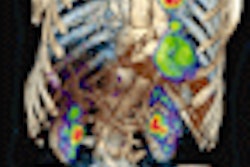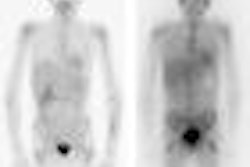Imaging procedures are a major and growing source of ionizing radiation in the U.S. and can result in high cumulative levels of radiation, concludes a new study in the New England Journal of Medicine.
However, radiology advocates commenting on the study cautioned that the dangers are overstated, radiation dose reduction is being addressed with great energy, and it is important for patients not to avoid medically necessary tests.
The study identified 952,420 nonelderly U.S. adults (ages 18 to 64 years) residing in five different healthcare markets across the U.S. between 2005 and 2007. Dr. Reza Fazel from Emory University School of Medicine in Atlanta and colleagues from several institutions across the U.S. tapped utilization data to estimate cumulative effective doses of radiation from imaging procedures.
They used the data to calculate population-based rates of exposure, categorizing effective radiation doses defined as low (≤ 3 mSv), moderate (> 3 to 20 mSv), high (> 20 to 50 mSv), or very high (> 50 mSv) (NEJM, August 27, 2009, Vol. 361:9, pp. 849-857).
During the study period, a total of 655,613 participants (68.8%) underwent at least one imaging procedure associated with radiation exposure. The dose distribution fell into a wide range, with a median effective dose of 0.1 mSv per enrollee, per year (interquartile range, 0.0-1.7).
Moderate radiation doses were incurred in 193.8 enrollees per 1,000, per year; high doses were delivered in 18.6 per 1,000, per year; and very high radiation doses were delivered in 1.9 per 1,000, per year. Cumulative effective doses related to imaging procedures generally increased with advancing age, and were higher in women than in men. CT and nuclear imaging accounted for 75.4% of the cumulative effective dose, 81.8% of which was delivered in outpatient settings.
"Imaging procedures are an important source of exposure to ionizing radiation in the U.S. and can result in high cumulative effective doses of radiation," Fazel and colleagues concluded. "An important reason for the growing use of such procedures stems from their ability to radically improve patient care," they also noted.
Criticism
Commenting on the article, the Reston, VA-based American College of Radiology (ACR) wrote that with 82% of the scans performed in a nonhospital setting, "Most of the scans explored in the study were performed by nonradiologist providers that self-referred patients to their own imaging equipment."
Studies have shown that when providers can refer patients to their own scanners or those in which they have a financial interest, the use of imaging is greatly increased, the ACR wrote. The organization added that comprehensive imaging appropriateness criteria are in place to ensure the proper use of exams.
A perspective in NEJM accompanying the study stated that patients "incurred costs for procedures of uncertain value," but the ACR countered that negative exams do have value by precluding further costly and invasive exploratory techniques, ruling out disease, providing a baseline to monitor patient health, and giving the patient peace of mind.
In an e-mail to AuntMinnie.com, Dr. U. Joseph Schoepf, associate professor of radiology and medicine at the Medical University of South Carolina in Charleston, said that all cancer risk estimates are extrapolations of data collected from "World War II atomic bomb survivors, and it is highly questionable whether this data can be applied to patients receiving the kind and level of radiation involved with medical imaging."
"The crucial, beneficial role of noninvasive imaging is immediately and intuitively evident to every emergency physician, cancer physician, trauma surgeon, and many other medical professionals who rely on imaging to diagnose patients after accidents, diagnose and cure cancer, or detect heart disease," he wrote. "Accordingly, one can safely assume that the dire consequences of not performing imaging, thus missing injuries and disease, are substantially more real and devastating than the theoretical, never proven risk of causing cancer from radiation."
Important strides are being made in radiation exposure reduction, which has become a major focus at all levels of medical imaging, he stated. And because of the various motivations that drive the current discussion on radiation exposure, studies that serve little purpose but to frighten patients are here to stay, he wrote, "but with advancing technology and greater focus on the benefits of imaging, it will increasingly lose its base."
By Eric Barnes
AuntMinnie.com staff writer
August 26, 2009
Related Reading
Radiation dose and cancer risk in pediatric CTA exams, August 21, 2009
Repeated calcium scans increase cancer risk, study finds, July 13, 2009
Higher cancer risk seen in frequently scanned patients, March 31, 2009
CT dose-reduction awareness doesn't always translate into use, February 23, 2009
Pediatric CT dose drops with breast shields plus tube modulation, February 26, 2008
Copyright © 2009 AuntMinnie.com



















